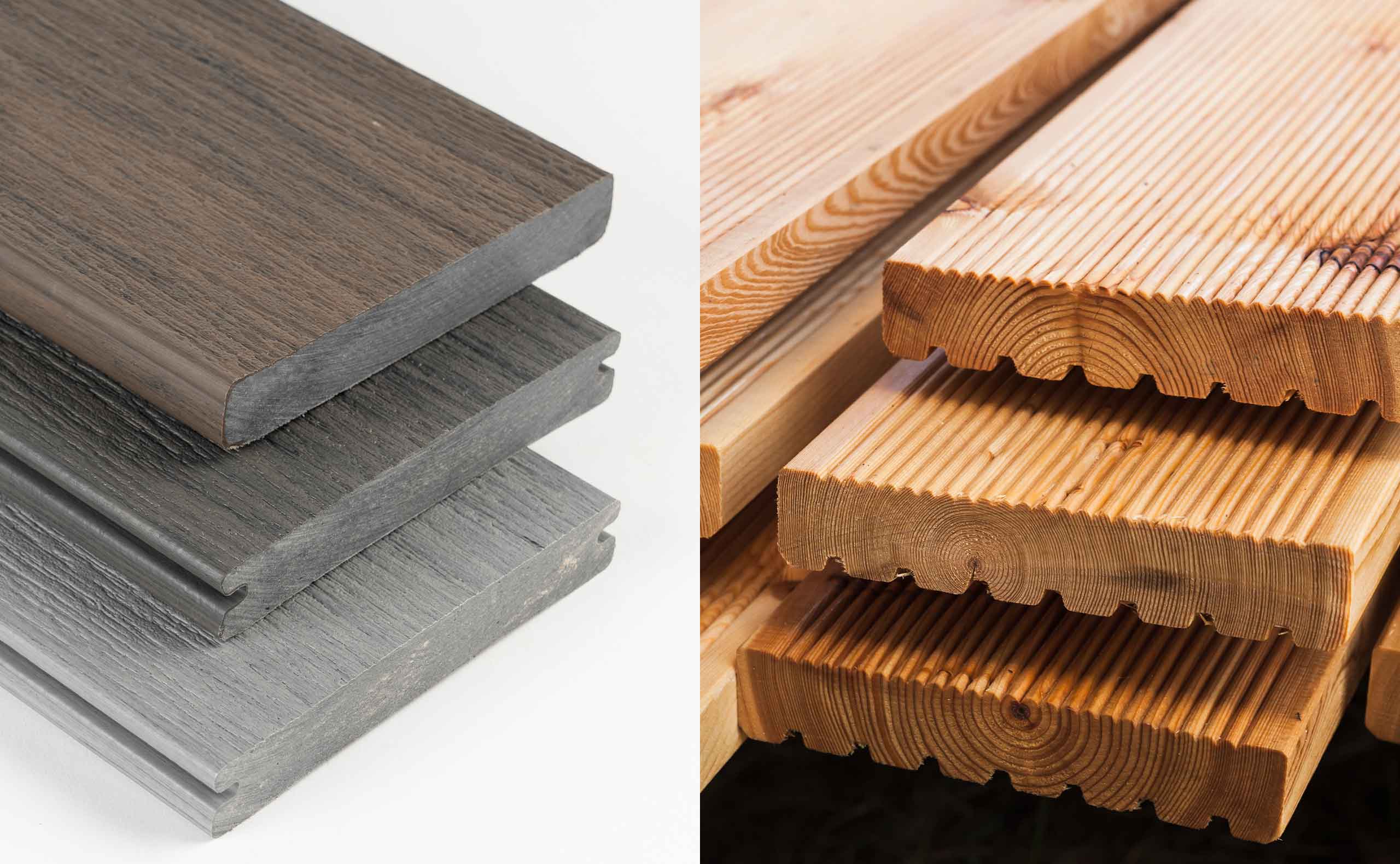When buying decking, there are many options for what material would benefit you and your lifestyle the most and at this stage is when the important question comes in: composite decking vs timber decking? The rise in popularity of composite decking over recent years can make it an appealing option, but the idea of traditional wood decking is tempting.
Research is imperative for deciding what kind of decking you should invest in and how the decking of your choice will benefit you long-term.
This blog will discuss the advantages and disadvantages of both options to ensure you feel confident in your choice of decking.
What is composite decking?
Composite decking is a synthetic product constructed with a combination of materials; brands often use recycled plastic and wood fibres with bonding agents. Despite being synthetic, composite decking material can resemble traditional wood decking but can also be customised to have a modern finish while maintaining a longer lifespan than its natural counterpart.
What are the benefits of composite decking?
There’s very little maintenance for composite decking other than tasks such as cleaning and sweeping, which only need to be done once or twice a year and do not require further payment. Most composite deck boards are straightforward to clean and wash, meaning you won’t have to spend an extended amount of time cleaning.
Appearance-wise, a lot of composite decking is UV resistant, and with high-quality decking, the colour is unlikely to fade over time. There is no need for continuous varnishing or painting. Some brands will offer a warranty covering the boards’ fading for customers’ peace of mind. Additionally, high-quality composite is often resistant to moderate scratching and stains, so you can enjoy your decking without worrying about damaging it.
Upkeep for composite decking is minimal and convenient throughout all weather conditions because of its resistance to rot. Moisture from rain or frost, as well as insects and pests, are less likely to become major issues which require maintenance, as composite decking utilises recycled plastic – which grants you peace of mind.
As there is less concern for appearance or upkeep maintenance, composite decking saves money in the long run due to the one-time payment and the decking’s long lifespan.
What are the disadvantages of composite decking?
Composite decking is a one-time purchase, and the initial outlay costs can seem daunting. However, the price can be rationalised by less maintenance on the decking throughout its life and the duration it lasts without damage, though this relies on the quality of the decking you purchase.
Quality is a significant factor concerning composite decking, and unsatisfactory results can be expected from cheaper, lower-quality decking. Scratches, colour fading and splitting are potential repercussions of cheap materials and can result in higher maintenance costs to retrieve the initial state.
A drawback for some is the unnatural structure of composite decking, and while it can look similar to wood, there are often differences that you may find notable. Additionally, because composite decking is synthetic, it cannot be stained like authentic wood; therefore, the colour that you initially chose cannot be changed.
Advantages of wooden decking
Wooden decking has been a popular choice for decking in previous years due to its low-cost initial outlay and aesthetic qualities. More expensive timbers make for a natural-looking deck, and while cheaper wooden decks tend to be aesthetically plain, they can be stained in different colours whenever desired.
There are many types of wood to choose from, each with different qualities that can benefit you differently. Redwood and cedar have a low chance of warping, and the best quality versions of these woods can be insect-resistant.
With proper care and maintenance, traditional wooden decking can have a long lifespan and be a powerful addition to outdoor spaces.
Disadvantages of wooden decking
While the initial cost of wood is usually cheaper than composite decking, the overall cost can increase over time due to the maintenance required to keep it looking pristine.
The amount of treatment and maintenance of a wooden deck is usually much higher to keep it looking aesthetically pleasing and maximise its lifespan. This must be done frequently, meaning an increased cost through regularly purchasing materials.
If you want to save money during the initial purchase, the decking will have a shorter lifespan and require more maintenance due to the quality of the wood.
As it is a natural material, wood is vulnerable to insects and pests and can rot quickly if not looked after, requiring fixing or replacement. The highest quality timbers that are resistant to insects will be the more expensive options and will cost more to maintain long-term.
Deckortators’ range of decking
Deckorators currently have three ranges of decking to suit your aesthetic and lifestyle. The Voyage, Vista and Trailhead ranges are made of multiple configurations and come in various colour and design options to satisfy your preference.
For example, our Voyage decking comprises our patented mineral-based technology which contains no wood content at all. Trailhead utilises scratch-resistant surface capping, and Vista has variegated colours for a more natural look.
To find out which decking would best suit you and your lifestyle, contact our team today to discuss your options.





